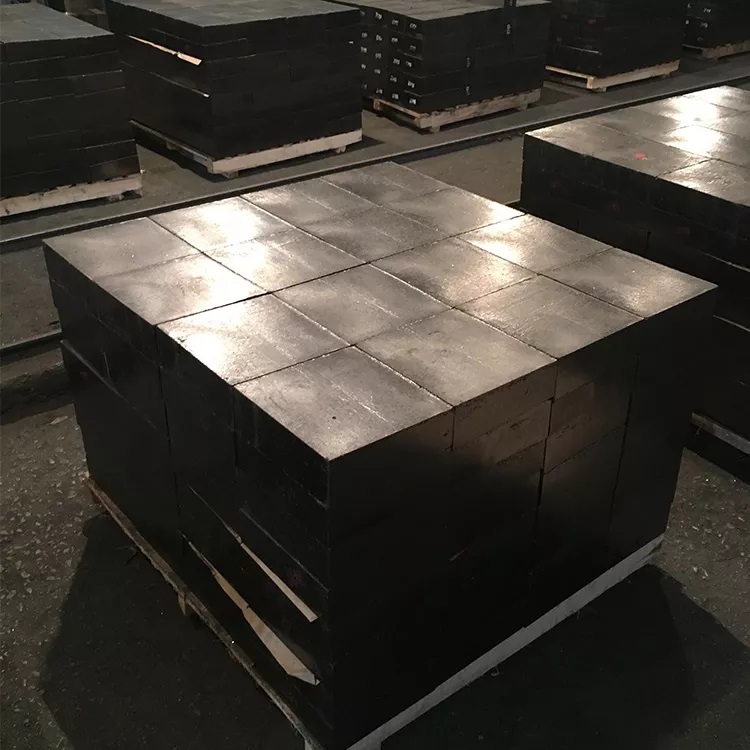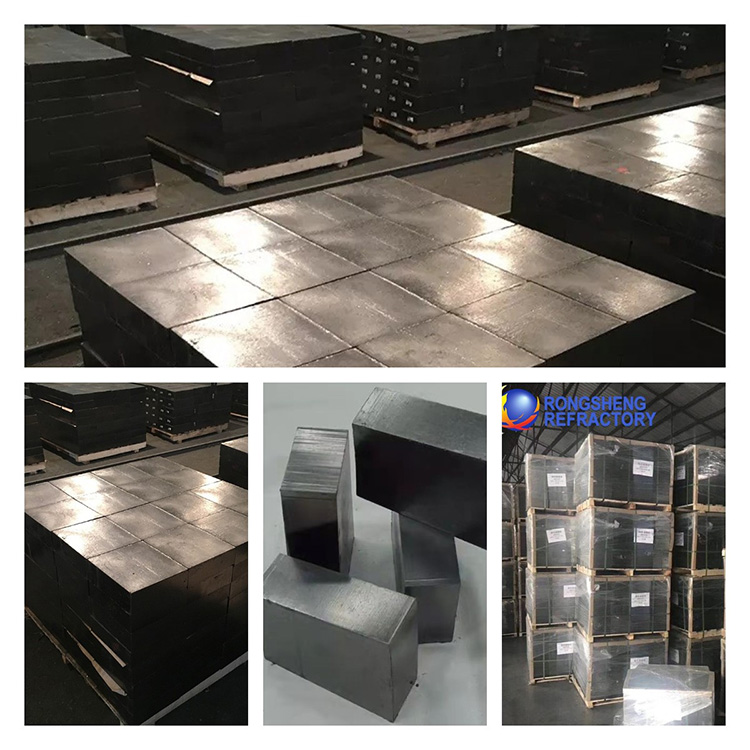Use of MgO-C Bricks in Refining Ladles and Steel Ladles
MgO-C bricks are widely used in refining ladles and steel ladles, primarily in the freeboard and slag line areas. These areas require refractory materials with high resistance to high temperatures, thermal shock, and slag erosion. Traditionally, magnesia-chrome refractories were used for these sections, but due to environmental concerns over chromium pollution, they have been largely replaced by magnesia-carbon bricks.
During the preheating process, the MgO-C bricks in new ladles undergo severe damage, forming a loose decarbonized layer of 30–60 mm. This layer detaches when molten steel is poured in, causing magnesia grains to mix with the slag. Preventing carbon loss from MgO-C bricks during preheating is crucial for extending the service life of the freeboard and slag line. Key techniques to achieve this include:
Adding composite anti-oxidants to MgO-C bricks.
Coating the brick surface with a low-melting alkaline glass phase after lining construction to protect carbon during preheating.

PART 01: Application of MgO-C Bricks in Converter Linings
The working conditions in different sections of a converter lining vary, leading to different performance requirements for MgO-C bricks:
Converter Mouth: This area is frequently exposed to molten steel splashing, requiring refractory materials resistant to high-temperature slag and hot exhaust gas erosion while preventing steel adhesion for easy cleaning.
Converter Cap: This section experiences severe slag erosion, rapid temperature fluctuations, and exposure to high-temperature gases and dust. Therefore, high-spalling-resistant and slag-resistant MgO-C bricks are used.
Charging Side: MgO-C bricks here must withstand high slag erosion and mechanical stress. High-strength MgO-C bricks with metallic anti-oxidants are typically used. Studies show that MgO-C bricks with aluminum additives have lower high-temperature strength at lower temperatures but higher strength at elevated temperatures compared to those with both aluminum and silicon metal additives.
Slag Line: This is the most erosion-prone area, where refractory materials interact with molten slag and furnace gas. MgO-C bricks with high carbon content are required to enhance slag resistance.
PART 02: Application of MgO-C Bricks in Electric Arc Furnaces (EAF)
Most electric arc furnace walls are constructed entirely of MgO-C bricks, making their quality crucial for furnace longevity. The main factors affecting MgO-C brick performance include:
MgO Source: The purity of magnesia, impurity types, bonding of periclase grains, and grain size.
Graphite Source: The purity, crystallinity, and flake size of graphite.
Binder Type: Typically, thermosetting phenolic resin is used, with critical parameters being resin content and residual carbon content.
Anti-oxidants can modify and improve the brick matrix structure but are not always essential under standard operating conditions. They become necessary in furnaces with high FeOn slag, irregular oxidation zones, or furnace hotspots.
The erosion of MgO-C bricks in the slag line results in the formation of a dense reaction layer and a decarbonized porous layer. The reaction layer (slag penetration zone) is formed as high-temperature slag infiltrates decarbonized areas, reducing FeOn into metallic iron. Slag penetration depth is determined by the thickness of the decarbonized layer, which is typically minimal due to the presence of graphite.
Taphole Design:
Tilting Taphole System: Al₂O₃ or ZrO₂-based refractories with C, SiC, and Si₃N₄ additives are used instead of MgO-C bricks.
Bottom Taphole System: The taphole consists of outer sleeve bricks and inner pipe bricks made of MgO-C. The inner diameter (140–260 mm) depends on furnace capacity and tapping time.
A steel plant improved furnace campaign life by replacing sintered magnesia bricks with medium- and low-grade MgO-C bricks at the tapping hole and copper outlet areas, doubling service life from 60 heats. The slag line remained intact, reducing maintenance requirements and improving molten steel purity and production efficiency.

PART 03: Application of Al-Mg-C Bricks in Ladles
MgO-C bricks are commonly used in refining ladles, mainly in freeboard and slag line areas, where they must withstand high temperatures, thermal shock, and slag erosion. Previously, magnesia-chrome refractories were used, but environmental concerns led to their replacement with MgO-C bricks.
During preheating, severe damage occurs to MgO-C bricks in new ladles, forming a loose decarbonized layer (30–60 mm thick) that detaches when molten steel is poured in, carrying magnesia grains into the slag. Preventing carbon oxidation during preheating is essential for extending brick service life. Key measures include:
Adding composite anti-oxidants to MgO-C bricks.
Coating the brick surface with a low-melting alkaline glass phase after lining construction to protect carbon during preheating.
By optimizing MgO-C brick composition and preheating procedures, steel plants can significantly enhance refractory longevity and reduce maintenance costs.
